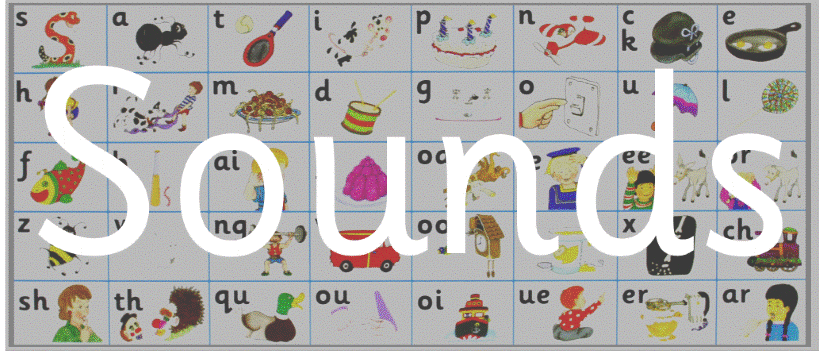
Sounds
In Jolly Phonics the 42 main sounds of English are taught, not just the alphabet. The sounds are in seven groups. Some sounds are written with two letters, such as ee and or. These are called digraphs. Both oo and th can make two different sounds, as in book and moon, that and three.
Each sound is taught with an action, which helps children remember the letter(s) that represent it.
Children should learn each letter by its sound, not its name. For example, the letter a should be called a (as in ant) not ai (as in aim). Similarly, the letter n should be n (as in net), not en. This will help in blending. The names of each letter will be taught later. The letters have not been introduced in alphabetical order. The first group (s, a, t, i, p, n) has been chosen because they make more simple three-letter words than any other six letters. The letters b and d are introduced in different groups to avoid confusion.
Blending
Blending is the process of saying the individual sounds in a word and then running them together to make the word. For example, sounding out d-o-g and making dog. It is a technique every child will need to learn, and it improves with practice. To start with, you should sound out the word and see if a child can hear it, giving the answer if necessary. Some children take longer than others to hear this. The sounds must be said quickly to hear the word. Try little and often with words like b-u-s, t-o-p, c-a-t and h-e-n. It is easier if the first sound is said slightly louder
Tricky Words
Some words in English have an irregular spelling and cannot be read by blending, such as said, was and one. Many of these are common words. The irregular parts have to be remembered. These are called the ‘tricky words’.
